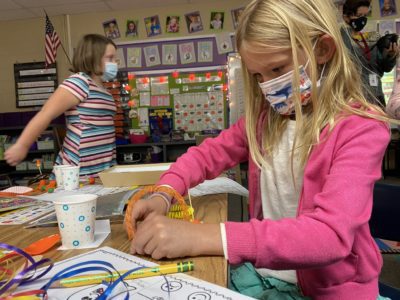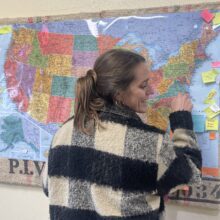The William Randolph campus of Asheville City Schools (ACS) sits in the Montford neighborhood, and on Wednesday, Oct. 9, it was a one-stop-shop for groceries, FEMA assistance, and hot meals.
Zoey, the aspiring therapy dog, greeted families as they came in, and her owner Jessie helped navigate people toward their desired needs.


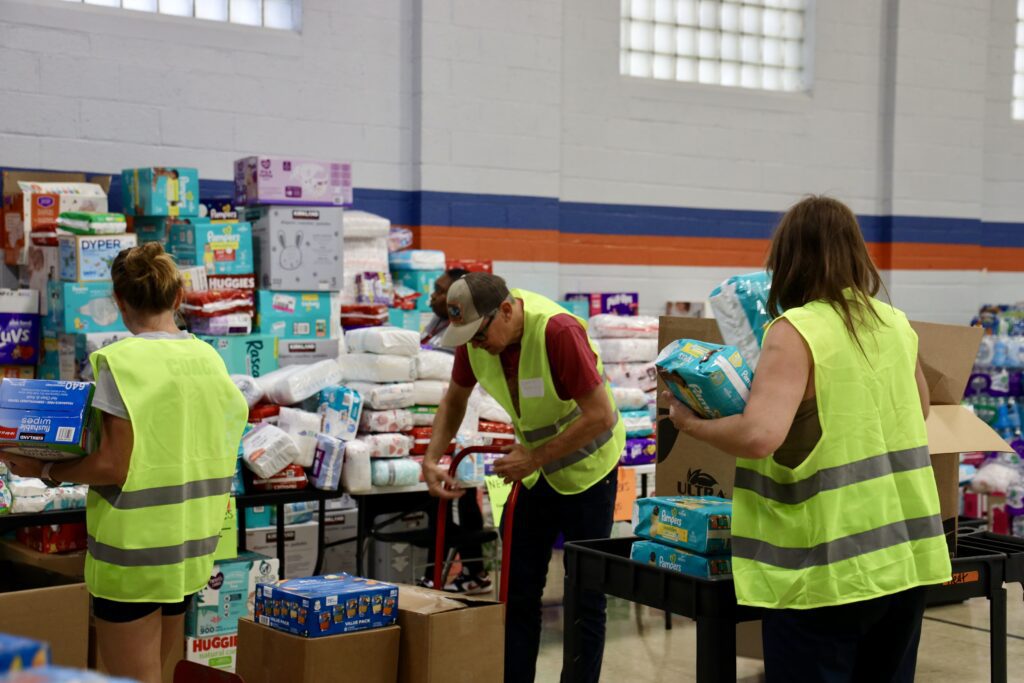
The following day, this ACS hub added a college application work session to the list of resources, as staff and counselors invited seniors to come for assistance in filling out residency forms, FAFSA, and the Common App, workshopping essays, and more.
And on Friday, Oct. 11, buses will start delivering groceries via this distribution center.
LaTonya Best, exceptional children support specialist, sat at the welcome table, beckoning families in with their lists of needs.
“We are all in this together, and we want them to know that they are loved. This right here, community,” she gestures to the volunteers sorting, stacking, and packing in the auditorium, “it really warms my heart.”
Asheville received 14 inches of rain, nearly three months’ worth of precipitation, over a three day stretch that included Hurricane Helene. Much of the city and surrounding Buncombe communities were flooded, and nearly the entire community was cut off from power, cell towers, and access to water. That last element has remained, as public water infrastructure was destroyed. It is unclear when it will be restored, but the community continues to rally in the face of uncertainty.
Asheville Middle School (AMS) is a primary distribution site for the city of Asheville and has been from the initial stages of rescue and recovery. T-Mobile’s Crisis Response team set up mobile charging and WiFi stations at AMS on Oct 1. The New York State Incident Management Team has been using the school as their command center after arriving on Oct. 2 and will be there indefinitely.
![]() Sign up for the EdWeekly, a Friday roundup of the most important education news of the week.
Sign up for the EdWeekly, a Friday roundup of the most important education news of the week.
In the immediate days after the storm, football and baseball fields at Asheville High School/SILSA were being used by Mission Hospital to load and land helicopters for supply distribution to neighboring counties cut off by the storm. Helicopter use has decreased since roads have been cleared.
“You don’t go through national disaster training in your school leadership class, you know?” said Dr. Kim Dechant, ACS chief of staff. “I’ve learned a lot about how people respond to natural disasters. And it’s just all hands-on right now.”
Once the storm passed, connectivity was a grave issue. There are around 670 staff members at ACS and 3,862 students enrolled. ACS leadership trying to locate their staff was a monumental task without cell towers, roads blocked, and flood waters still cresting.
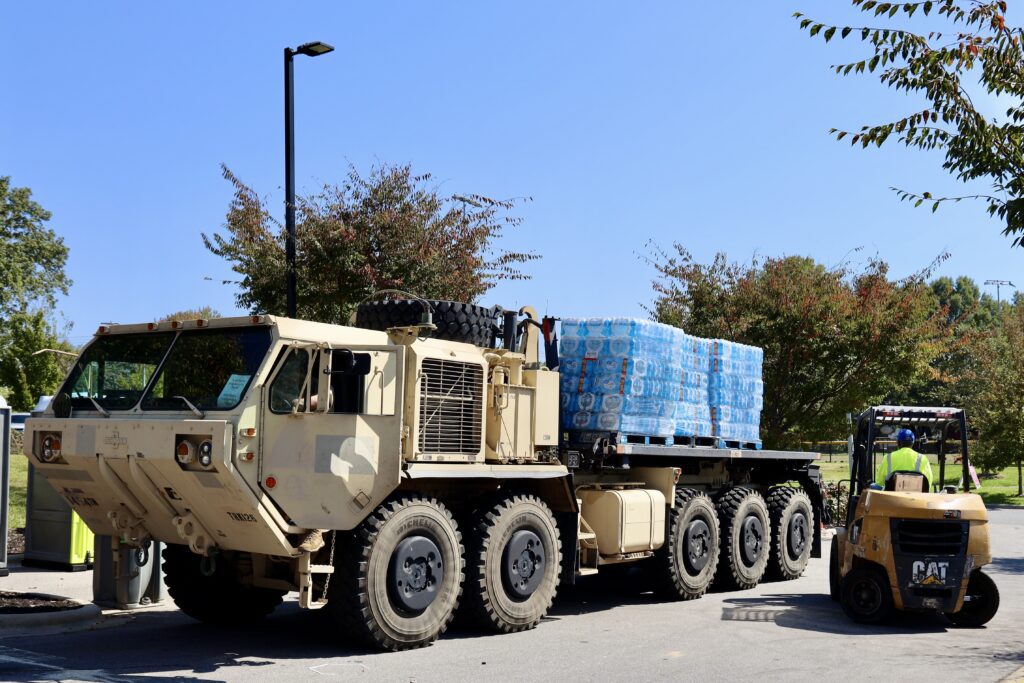

The tracking went top down — central office located principals and made sure they were safe, then principals were tasked to find their staff. A master spreadsheet was created to note specifics for each staff member — do they have damage to their home, did they relocate to another area, and what do they need if they stayed?
There is a similar tracking list for students. Dechant believes those students whose families have relatives that live outside of the area, or resources to relocate, are asking themselves a hard question. In light of the situation, do I enroll my child in a school outside the area? She said both ACS and Buncombe County Schools are advising every family to do what is best for them.
DPI has said these students would be considered McKinney-Vento children because they were displaced.
“I know families are eager to get their kids back in schools, and so are we,” Dechant said. But at the same time, she knows it will take some time to do it in a safe and healthy way.
The city of Asheville is now working on drilling wells on school campuses so they can access water. The district has a goal of reopening on Monday, Oct. 28.
“The wells provide us with a backup option in the event we have another situation that causes us to lose water,” Dechant said.
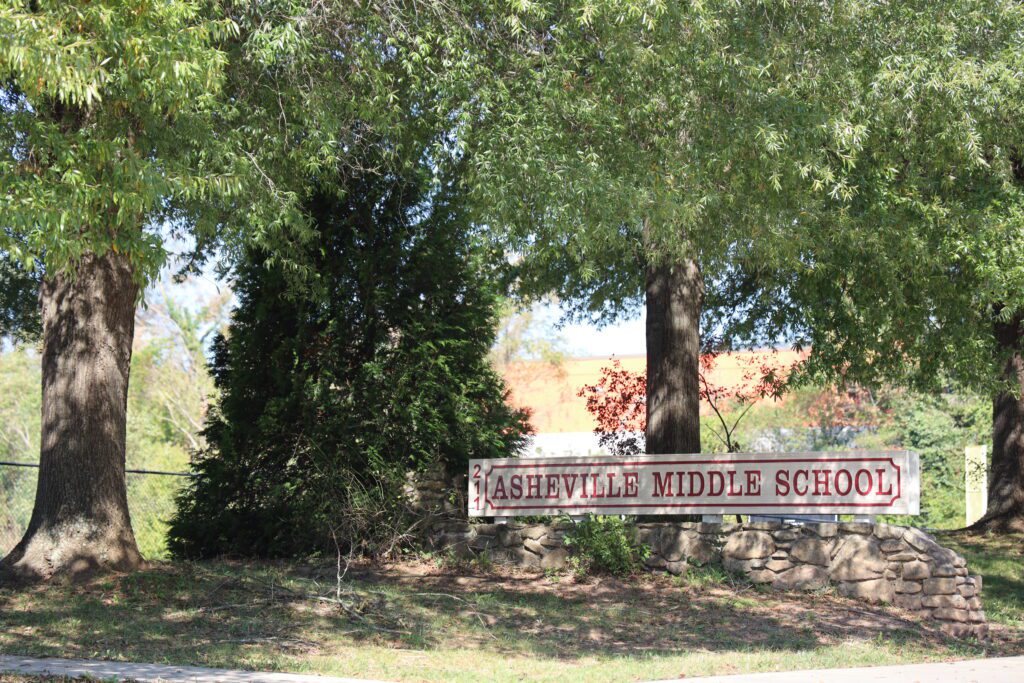
“(The school system) is where they’re fed, cared for, and educated, but the last week, we had to focus on the human piece of making sure that we were getting food and supplies and accounting for our families and accounting for our staff,” she said.
As with so many tragic events, there lies too the silver linings.
In the week following the storm, Dechant remembers seeing a fireman pull up to AMS with a truck from Spring Creek. This was a high impact area in Madison, and he was dropping of a truckload of resources, insisting his community was getting enough supplies via air drop.
With the running list of needs for the damaged homes of ACS staff, Dechant knows a parent who within 24 hours, always provides. During our conversation, she and her son popped in with dehumidifiers and fans.
Dechant recalls a counselor at a ACS high school whose house was significantly damaged out volunteering, still acting in service.
“Seeing people who don’t have, give,” she said, “it’s restored my faith in humanity.”
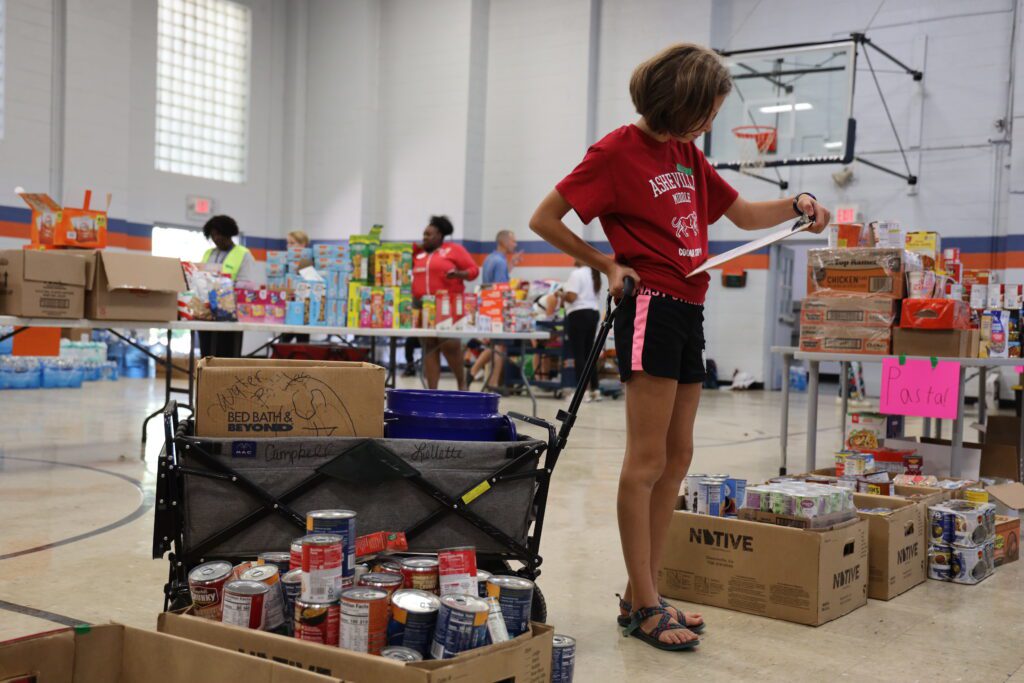
Recommended reading


